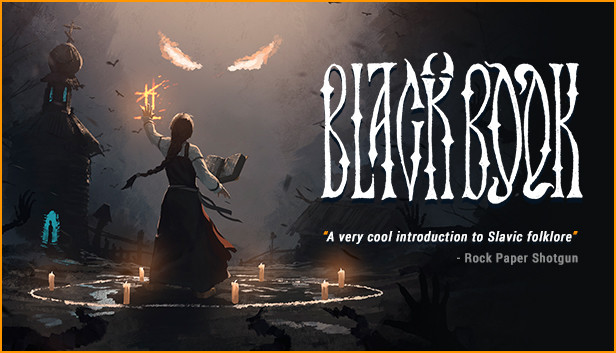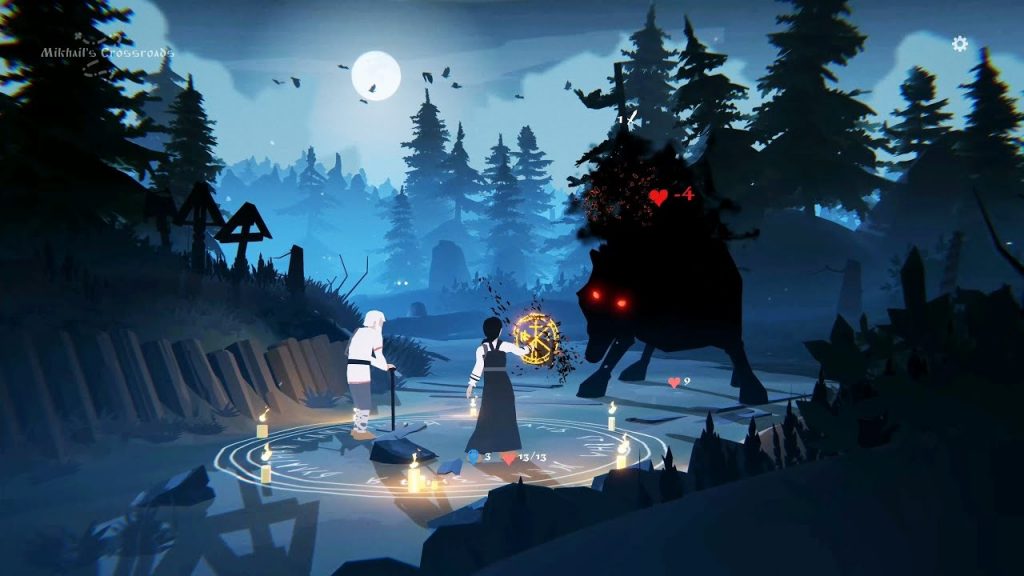
Black Book Game Review
There are many products on the gaming market today that provide a unique introduction to a wide variety of ideas. A huge number of variations of zombies, as many wars and battles, and “bagels” have flooded the world. The basis for their own inventions, as well as existing myths and legends. Naturally, the question has often arisen as to why there is no decent video game about Slavic mysticism. The Black Book, or Black Book, is the answer.
The plot of the game Black Book
While the West spent most of its time developing science, the Slavic lands were no match for it. Here, magic was in power, and its representatives were both good and evil. Thus the devils prevented the inhabitants from doing their business, but nearby lived a sorceress named Vasilisa, who kept them “in check”. She also rendered a number of services to the locals. People turned to her with requests to deal with a waterman, to free a hut from evil spirits, and much more.
Vasilisa is a young sorceress who chose this profession when she wished to revive the man she loved. To achieve her goal, she must open the seven seals of the Black Book and then make a wish. The seals, of course, are not all that simple. Each one requires an individual approach, and so Vasilisa is in for a series of fascinating journeys, quests and characters.
In order to understand what is happening, there are textual sketches in the game. They act as some kind of clues that allow the heroine to decide on a particular choice. Saving people is not always the right option, and so have to make a lot of effort to still perform the task and reach the cherished goal.

Game Features
The game is a complex of traditional directions, including a textual quest, a visual novel, an action game, a “role-playing” game with the need to act as a good or evil witch, and much more. Such a combination, though intense, significantly brightens up the gameplay, arousing the interest of fans of different genres. That said, all the directions are cleverly woven together.
The main character’s start is always celebrated in the hut. It’s also where she has her interactions with her partners/guests/devils. An interesting point has to do with the work of the named devils. Despite the fact that they can be assigned responsible tasks, they also commit sins. Often, they can harm people, and then Vasilisa’s karma will fly. If to leave them in a hut, they will start to annoy the sorceress.
After completing domestic chores, you can go on a trip. To do this there is a map on which to move. Each location is accessible once. The journey includes a textual sketch, exploring Vasilisa’s world, having to make choices and fight evil spirits, completing another quest, etc.
Battles are played on the principle of a card game. So there is a pack of cards in hand that “dictates” the possibilities. In addition, the opponents also have card sets. They are usually small, but if you hit a sorcerer, you have to strain yourself. You can have 1 word in 1 turn. The deck itself can have 13-33 cards. There can be up to 4 spears. The trick is that players are allowed to experiment with the composition of the sets.
There are also puzzle battles where cards will be needed. While passing the next map marker, the player encounters a boss or an important story event. Having passed this stage, he returns to safe routine, after which he sets off again. And so it should be until all the seals have been resolved.
